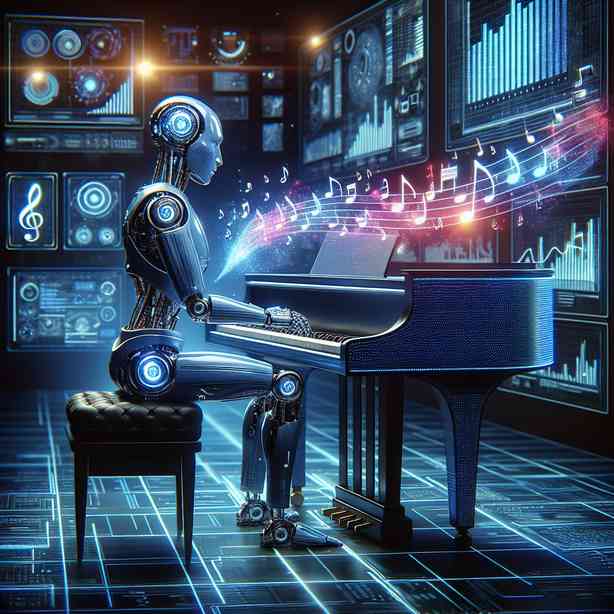
The emergence of artificial intelligence (AI) in music creation is transforming the way music is composed, produced, and consumed. Over the past few years, AI technologies have demonstrated remarkable capabilities in various fields, and music is no exception. As we delve into the rise of AI in music creation, we will explore its impact on the industry, examine various AI tools and platforms, and discuss the implications for artists, producers, and audiences alike.
AI’s journey into music began with algorithms capable of analyzing sound patterns and structures. By processing vast amounts of data from existing music, AI systems can learn the nuances of different genres, styles, and even individual artists. This wealth of information enables AI to generate original compositions that are not only unique but also resonate with listeners. As a result, we witness an innovative approach to music creation, where technology collaborates with human creativity.
There are several AI-powered tools reshaping the music landscape. For instance, platforms like OpenAI’s MuseNet and AIVA (Artificial Intelligence Virtual Artist) are capable of creating full-length pieces of music across various genres. MuseNet, which leverages deep learning algorithms, can generate everything from classical symphonies to contemporary pop songs. AIVA, on the other hand, focuses on composing music for films, video games, and advertisements, showcasing the versatility of AI in catering to different musical needs.
The process of music creation using AI often involves collaboration between humans and machines. While AI can generate melodies, harmonies, and beats, the human touch remains crucial. Producers and musicians can refine AI-generated outputs, adding emotion and personal flair that only a human can provide. This partnership opens up new avenues for creativity, allowing artists to explore uncharted territories in their compositions while saving time on repetitive tasks.
Moreover, AI is not limited to composition; it also plays a significant role in music production and mastering. Technologies such as LANDR utilize AI algorithms to analyze audio tracks and apply appropriate mastering techniques automatically. This democratizes access to high-quality production, enabling independent artists to produce polished tracks without the need for expensive studio time. As a result, more musicians can share their work with the world, leading to a broader diversity of voices and sounds in the music industry.
While the integration of AI in music creation brings numerous advantages, it also raises important questions about authorship, copyright, and the value of human creativity. As AI composes music that challenges traditional notions of authorship, discussions around intellectual property become increasingly pertinent. Who owns a song created by an AI? And how do we assign credit for the work? These questions will require thoughtful consideration as the technology continues to evolve.
Another critical aspect to consider is the potential impact of AI on employment within the music industry. While AI can streamline many processes, there are concerns regarding job displacement for musicians, producers, and songwriters. However, it is essential to view AI not as a replacement but rather as a tool that enhances human creativity. The emergence of AI in music could lead to the creation of new roles and opportunities, allowing human experts to guide and shape AI-generated content, thus forging a new collaborative path forward.
In addition to the creative and technical aspects, the listener’s experience is also being transformed by AI. AI-driven recommendation systems, such as those used by Spotify and Apple Music, analyze user preferences and listening habits to provide personalized music suggestions. This technology not only helps listeners discover new artists and genres but also enables them to enjoy curated playlists that resonate with their tastes. As AI continues to improve its understanding of individual preferences, the music experience becomes increasingly tailored and engaging.
Furthermore, AI’s ability to analyze trends and patterns within vast data sets can provide valuable insights into emerging musical styles. By examining what resonates with audiences, AI can help artists make informed decisions about their music direction. This data-driven approach, when combined with human intuition, can lead to innovative sounds and styles that capture the zeitgeist.
Education is also a crucial component of the AI-music relationship. As AI tools become more prevalent, it is essential for educators and institutions to embrace these technologies as part of music curricula. Incorporating AI into music education can provide students with insights into advanced composition techniques and foster a better understanding of the musical landscape. By blending technology with traditional education, future musicians can develop a comprehensive skillset that prepares them for the evolving industry.
As we navigate the rise of AI in music creation, it is important to remember that this technology is still in its early stages. While significant advancements have been made, ongoing research and development will lead to even more sophisticated tools and platforms. As these innovations unfold, we can expect to see a continued blending of human artistry and artificial intelligence, resulting in groundbreaking music that pushes the boundaries of creativity.
In conclusion, the rise of AI in music creation represents a significant milestone in the evolution of the music industry. While it presents challenges and questions regarding authorship and employment, it also offers unprecedented opportunities for collaboration, innovation, and diversity. As artists, producers, and audiences embrace this technology, we can look forward to a richer and more varied musical landscape that reflects the harmonious blend of human creativity and artificial intelligence. As we move forward, continuous dialogue and exploration of the intersection between technology and artistry will be vital in shaping the future of music. By fostering this collaboration, we can cultivate an environment where music not only thrives but also resonates deeply with listeners worldwide.


